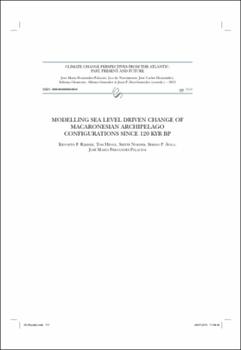Modelling sea level driven change of Macaronesian archipelago configurations since 120 kyr BP
Date
2013Abstract
The MacArthur and Wilson island biogeography theory relates species diversity on islands as the result of equilibrium between extinctions and colonization events which rates depend on island size and isolation. Although island size and isolation can be considered static on ecological timescales (<100 years) they are not static on longer time scales. Since the last million years sea levels fluctuate with a period of ca. 120 kyr between -120 m and up to +10 m MSL (Mean Sea Level). Due to these sea level changes islands have changed in size and ultimately may have drowned or emerged. The rate and degree of their drowning depends on island morphometry and the shape of the sea level change curve. We explore the effects of global sea level cycles on the configuration of archipelagos and volcanic islands of Macaronesia. The results indicate that the islands changed shape considerably during the last 120 kyr. Notably the period between 80 kyr and 15 kyr ago sea levels were at least 80 m lower than present and several islands now isolated were merged or were much larger than present. Recent shrinking of islands due to the sea level rise since the last glacial maximum period (20 kyr BP) led to more than 50% reductions in island size, significant loss of coastal habitat and a significant increase in isolation by the increase of distances between islands and island and continents. Island size reduction must have induced pressures especially on terrestrial insular ecosystems, inducing upward migrations and interspecies competitions, and probable extinctions. The splitting of merged islands must have led to separations of populations leading to gene flow losses for some biota. Present day islands are not representative for the mean island configurations during the last Myr but rather represent an anomaly. Islands at present are smallest and most isolated and this configuration makes the insular biota even more vulnerable to human impact.






